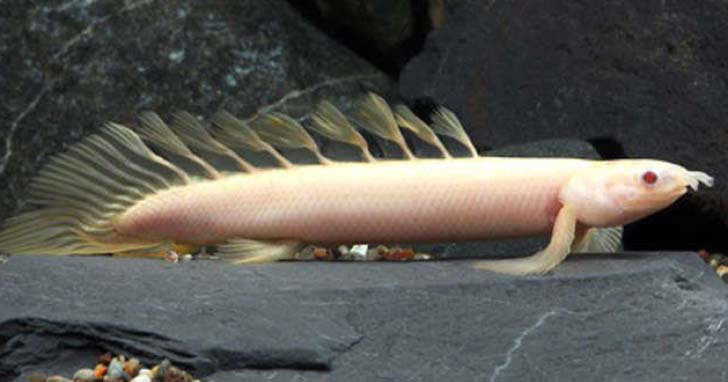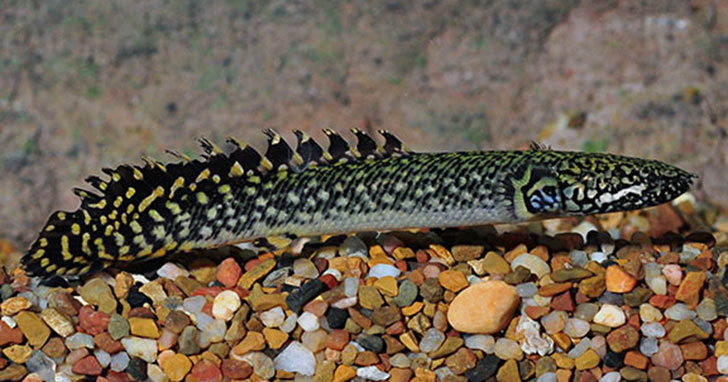Bichir: A prehistoric addition to your aquarium
What is a Bichir? When looking for a prehistoric aesthetic for your aquarium, the Bichir will fit the bill. It would be easy to believe that the Pokémon, Relicanth, was based off the Bichir. The Bichir (Polypteridae) is an ancient species that has been around for a long time. They live almost exclusively in Northeast Africa along the Nile River as well as its tributaries. Bichir make their homes in shallow, swampy waters, and semi-brackish water as well. Their physical attributes help them thrive in these environments and also contribute to the fact that they have remained unchanged for so long. How long do Bichirs live? Bichirs tend to live much longer compared to your average aquarium specimens and ten to fifteen years in captivity can be expected. The Polypteridae lifespan depends greatly on the owner’s attentiveness and conditions of the aquarium. For an attentive owner who provides exactly what the Bichir needs, these unique specimens can live for a significant amount of time, even as long as twenty years. What do Bichir look like? Polypteridae are ray-finned species resembling a cross between a snake and an eel, and they can grow to a considerable size as well. Their bodies tend to be heavily scaled, adding to their reptilian look. Dorsal fins continue all the way down to the end of their tail and fan out to create a sizeable surface area which helps the Bichir gain much of their momentum when moving. They also have two large pectoral fins that aid in mobility and speed and have the added benefit of enabling them to crawl on surfaces. Two small tentacle-like extensions make it easy for them to smell and navigate their murky surroundings, which is important because they have poor eyesight.
How big do Bichir get? The average size of a Polypteridae is between 1' and 2-1/2' in length, depending on the type of Bichir you get. What size tank should I get for a Bichir? The minimum recommended tank size for a Bichir is 90 gallons. While many have reared these species in smaller tanks, the physical attributes of the Bichir support the use of a larger tank for housing them. Bichirs are highly active and when fully grown will require a tank that provides them with ample room to move. Food and diet for a Bichir Bichirs are carnivores, and this means that a plentiful diet with protein is of paramount importance. The fact that they eat at night also makes them unique and far more different when it comes to managing as opposed to many other freshwater fish. Due to their nocturnal nature, aquarists will want to time their feedings during the night or early morning. It is recommended to work with the Bichir’s natural feeding schedule instead of against it or by trying to reprogram when they eat. With Bichir, relying on pellets or flake food is generally not recommended. Rather, focus on a protein-rich live, dry, and frozen food diet. Bloodworms, feeder fish, shrimp, nightcrawlers and beef heart are ideal for these species and aquarists will enjoy watching as the Bichir’s predatory instincts kick in during feeding time.
Are Bichir aggressive? While it would be unfair to consider the Bichir an all-out aggressive species, it must be noted that they do have aggressive tendencies. This, combined with the fact that they are carnivores, makes any fish smaller than them a potential meal. Species like the Oscar fish, Flowerhorn Cichlids, and Jack Dempsey Fish make for excellent tank mates, as will others who are bigger than the Bichir. The Bichir by itself is not small enough to be considered food and are too big to be bullied so it should have free rein over the aquarium without anyone getting in its way, and vice versa. Conclusion Bichirs are fun and rewarding to own, and their unique and prehistoric appearance makes them an absolute joy for aquarium enthusiasts. They require a very straightforward regimen of care and are an active fish that will promise visual appeal on a frequent basis to anyone watching the aquarium. |
||||||
|
|





